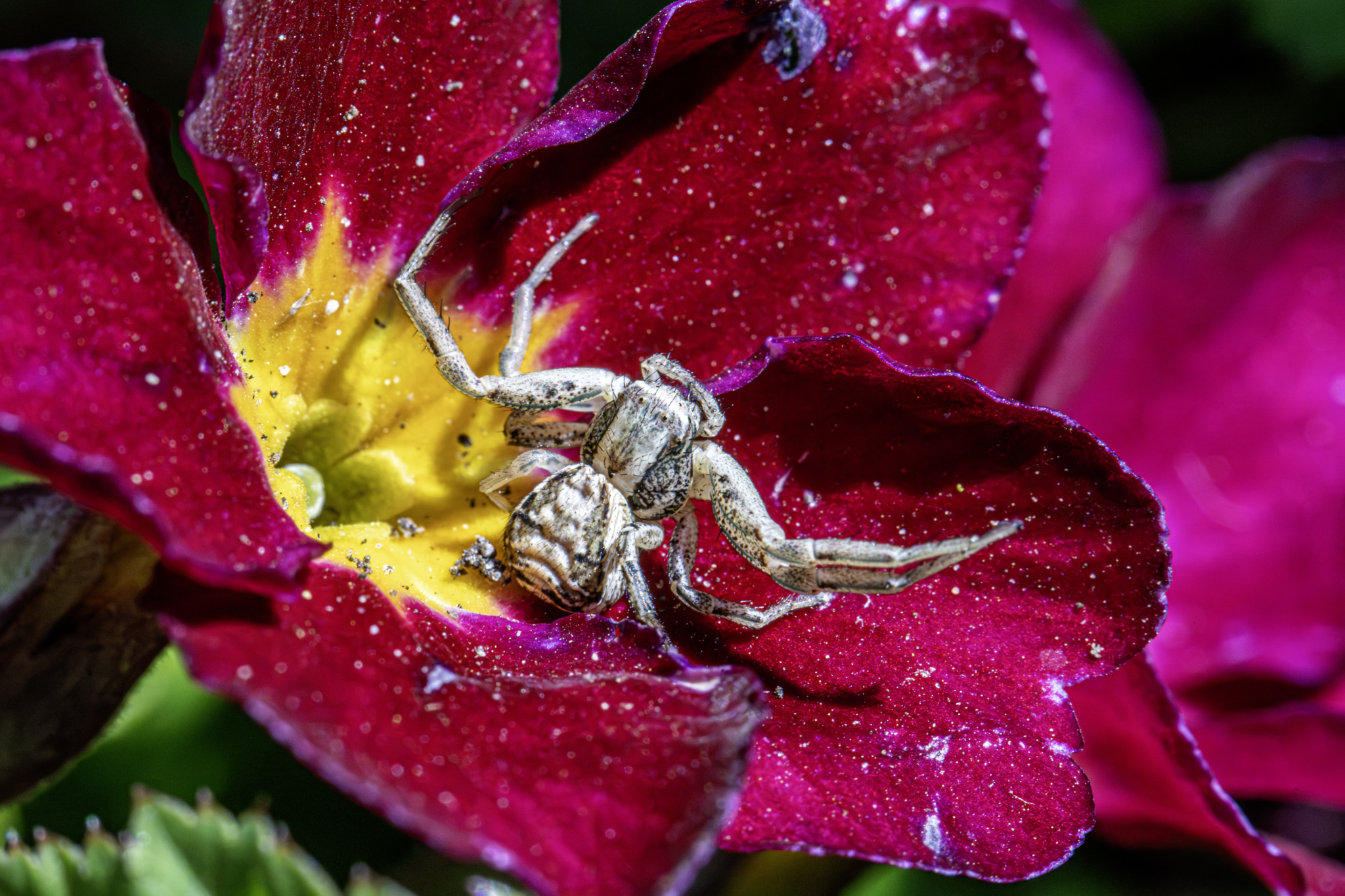The Ground Crab Spider (Xysticus cristatus) is a species of spider belonging to the family Thomisidae. Here are some key features and characteristics of the Ground Crab Spider:
- Appearance: Ground Crab Spiders have a flattened body and long, spiny legs, giving them a crab-like appearance. They are typically brown or gray in color, often with darker markings or patterns on their cephalothorax and abdomen. The size of adult spiders can vary, but they are generally relatively small, with a body length of around 5 to 8 millimeters (0.2 to 0.3 inches).
- Habitat: As their name suggests, Ground Crab Spiders are commonly found on the ground, where they inhabit a variety of habitats such as grasslands, meadows, woodlands, gardens, and shrubby areas. They are also occasionally found climbing on low vegetation or hiding among leaf litter.
- Behavior: Ground Crab Spiders are ambush predators that rely on stealth and camouflage to capture their prey. They typically wait motionless on the ground or on vegetation, blending in with their surroundings, and strike quickly when unsuspecting insects or other small arthropods come within reach.
- Diet: Ground Crab Spiders primarily feed on a diet of small insects and other arthropods, including beetles, flies, ants, and caterpillars. They use their strong front legs to grasp and immobilize their prey, often injecting venom to subdue them before feeding.
- Reproduction: Like other spiders, Ground Crab Spiders reproduce sexually. Mating typically occurs in the spring or early summer, and females may lay their eggs in silk egg sacs hidden in protected locations on the ground or in vegetation. The spiderlings hatch from the eggs and undergo several molts before reaching adulthood.
- Camouflage: Ground Crab Spiders are adept at camouflage, using their coloration and body shape to blend in with their surroundings and remain undetected by both predators and prey. This camouflage helps them ambush unsuspecting prey while also providing protection from potential predators.
- Ecological Role: Ground Crab Spiders play an important ecological role as predators, helping to control populations of small insects and other arthropods in their habitats. They are also prey for various predators, including birds, other spiders, and some small mammals.
Overall, the Ground Crab Spider is a fascinating and ecologically important species valued for its role as a predator and its unique adaptations for life on the ground. Despite their small size, these spiders are efficient hunters and play an important role in maintaining the balance of their ecosystems.
Views: 30
Subscribe to the newsletter:
